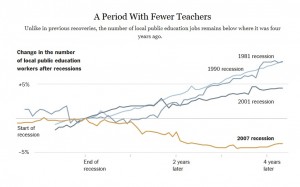Dear Commons Community,
Louise Lennihan, Provost at the CUNY Graduate Center, alerted me to this article on CUNY’s ASAP program that appeared in The Atlantic. Accelerate Study in Associate’s Program (ASAP) was developed by the City University of New York with funding from Michael Bloomberg’s Center for Economic Opportunity. ASAP was designed to address the poor completion rates of urban community college students. The national three-year graduation rate is 16 percent; and barely more than a third of community-college enrollees emerge with a certificate or degree within six years. ASAP provides a lot of support services for its students all geared to keep them in school, to progress academically, and to graduate. The program spends roughly $3,900 annually per student, on top of the $9,800 that the City University of New York community-college system spends on each of its full-time students every year.
In terms of accomplishing its goals:
“ASAP’s architects set a goal that the program’s top administrator described as “insane”—a three-year graduation rate of 50 percent—and according to the university’s own data, the program has exceeded it. The social-policy research organization MDRC, which began an independent study of the program in 2010, calls ASAP’s record “unparalleled.” Researchers randomly assigned the study participants to either ASAP or the regular community-college track, and while three-year results won’t be ready until this summer, preliminary outcomes, just released, show the ASAP students to be dramatically outstripping the control group on every count—persistence, credits earned, and graduation rates. A third of the students who enrolled in ASAP in the spring of 2010 finished in two and a half years (compared with 18 percent of the control group). Nationwide, that’s the proportion of all community-college students who emerge with a credential in six years.”
In terms of curriculum, the program isn’t necessarily cutting-edge and scaling up such a comprehensive effort would be a challenge, and full-time college, of course, is never going to be for everyone. The article concludes that at a moment when proponents of “disruptive” technology are promising a transformation of higher education, ASAP offers a different path, based on the premise that disruptions on the way to degrees are exactly what students at lower-tier schools need to avoid. If America is serious about being an opportunity society, students deserve the advantages of the old, steady way of going to college.
Tony





